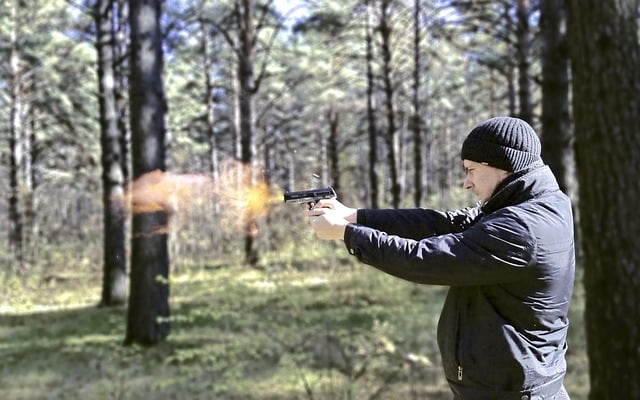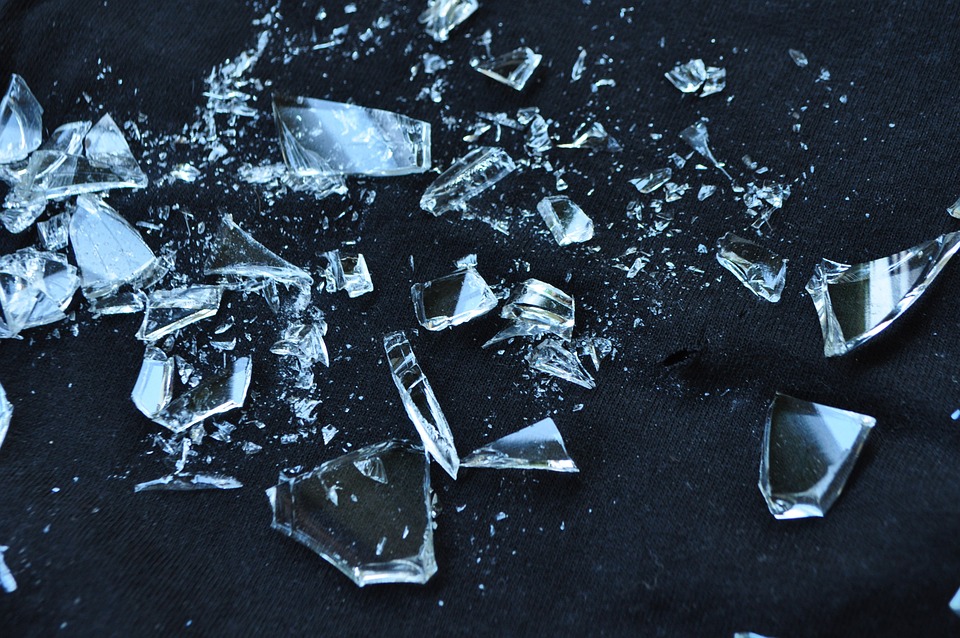In this article, we are going to discuss various perfectly inelastic collision examples and detailed facts on each.
The following is a list of perfectly inelastic collision examples:-
Car accident
A car approaching with a speed thwacks the car standing at rest, then the kinetic energy of the car is transferred to the car at rest converting into some other form of energy that could be potential energy or heat energy and sound energy. This is an example of inelastic collision because the kinetic energy between the collisions of cars is not conserved.

Boxing
Boxing is an example of an inelastic collision. The two players hit each other using their muscular force. Each punch hitting the opponent player is an example of a collision, the energy is not conserved here, and it turns into either the frictional energy due to rubbing of body or potential of the muscular force.

Shooting
When a bullet is fired from the gun, it moves with its kinetic energy towards the target. After hitting the target, its kinetic energy is reduced to zero after traversing inside the target, and even if it travels through the target plate then the momentum and the kinetic energy of the bullet changes thus does not follows the law of conservation of energy and momentum and hence is an example of inelastic collision.

Mud ball thrown on a rigid wall
If you threw a mud ball on the wall, it will collide and stuck with the wall changing its shape. No kinetic energy will be conserved and hence is an inelastic collision.

Kayak boat crossing the steeper slope
While riding a kayak, if you cross a steeper slope and come to the gentle level of the water, the water will splash over you equal to the force exerted by the kayak on the volume of water. We have to maintain the momentum of the kayak, well the kinetic energy of the kayak varies.

Stone thrown in water bodies
On throwing a stone in water, the kinetic energy of the stone is converted into vibrational energy on immersing through the layers of the water, which is reflected as a wavy concentric pattern by the molecules on the surface of the water.

Striking a matchstick on the matchbox surface
On striking a matchstick on the surface of the matchbox, the frictional force is produced. This frictional energy is converted into heat energy. Since red phosphorous on a matchstick is highly volatile, it catches fire on rubbing on a surface. Here, the frictional energy is not conserved but converted into heat energy.
An Object falling on the ground
The object falling on the ground converts its gained potential energy into kinetic energy for its flight. After making a fall on the ground it doesn’t bounce back or elapse the distance but stands at rest making its velocity zero and thus the kinetic energy becomes zero. Hence is an example of inelastic collision.
Breaking a glass

Image credit: pixabay
On hitting a glass with any object, it breaks into pieces. The kinetic energy imparted on the glass by the object converts into the vibration pattern in the molecules constituting the glass that results in the glass breaking.
Drawing water from the well
While drawing water from the well using a pot, a pot is released into the well tied to the rope on a pulley. The pot will initially collide with the surface of the water.
On the collision of a pot with the water surface, the kinetic energy of the pot is converted into vibrational energy creating ripples on the surface of the water. The water is filled up in the pot due to the ripples formed on collision.
Ball bouncing back on the ground
The ball bouncing on the ball gives away its kinetic energy on every bounce. This implies that the kinetic energy of the ball drops frequently and is not conserved.
Two molecules of different masses colliding with each other
Consider a molecule 1 of mass ‘m’ approaching molecule 2 at rest having a mass ‘2m’ which is double than that of molecule 1. The velocity of molecule 1 is ‘v1’.

On colliding, molecule 1 with molecule 2, they move with the velocity ‘v’.

As per the law of conservation of momentum

Since m1=m, m2=2m and v2=0

This implies that for momentum to be conserved, final velocity after collision should be equal to the 1/3rd times the velocity of the colliding molecule.
Henceforth, the kinetic energy of the molecules is not conserved and therefore it is an inelastic collision.
Waves hitting the rock cliff
The ocean water has more potential energy stored with it in the central volume of the oceanic water columns. The water surface lying at the coastline constitutes the kinetic energy with it.
This wave approaches the coastline, hitting the rock cliffs smacking across the cliff, and returning back to the ocean. This consequence in the erosion of a rock cliff is due to abrasion and hydraulic actions. The kinetic energy of the wave is transferred into some other form of energy, hence it is a type of inelastic collision.
Waterfall
The flowing water bodies always carry debris along with it, which gets deposited into the sedimentary basin when the water makes its fall along with the debris. The flowing water is associated with kinetic energy with it.
The velocity of the water increases while making its fall from the cliff. After making the fall, the kinetic energy of the water decreases converting a part of it into frictional energy pushing debris of rocks along with it.
Clouds colliding with each other
The water vapours condense to form clouds and store enough potential energy with them. When they have enough potential energy, two mobile clouds collide and this energy is converted into kinetic energy and the water droplets flow down to the earth’s surface due to gravity.
On rainfall, the kinetic energy of the raindrops decreases to nil on meeting the ground surface.
Shot bombs
On throwing a shot bomb on the ground, the kinetic energy given to the shot bomb is converted into frictional energy when it touches the ground surface and creates heat and sound energy.
Car hitting a tree
A car accelerating at a certain speed if hits the tree by accident then the kinetic energy of the car is converted to heat energy, sound energy and results in the deformation of a car. The kinetic energy is converted to some other form of energy hence it is an example of inelastic collision.
Weight falling on the object
If a heavy mass falls on the object causing the damage, is an example of an inelastic collision, as there is no movement of the object causing the deformation.
Slider
When you take a drift on a slider, the body freely moves from the upper point to the lower point of the slider because of the steeper slope converting the potential energy of the body into kinetic energy. The body accelerates down the slope.
The body comes to rest on colliding with the ground converting the kinetic energy into the frictional force. Since the upper part of our body is still in the kinetic motion in the slanting direction downward, the body continues to move in that direction causing the body to move a little ahead even after the feet touch the ground surface.
Mixer grinder
The spinning of the blades due to the rotation of a shaft sets the mixture into circular motion. The energized mixture particles collide with the blade that resulting in a grinding of the mixture into fine particles and generating heat which is released out by the mixture.
Since the energy is not conserved in the process, subsequently converting the kinetic energy into heat energy, this is a type of inelastic collision of blades and mixture particles.
Fruit falling from the tree
The kinetic energy of the fruit falling on the ground due to gravity is not conserved after it makes the fall on the ground.
In case the momentum of the fruit is conserved then it will bounce back utilizing its potential energy into kinetic energy and finally dropping on the ground with nil energy. Hence the kinetic energy is not conserved by the fruit fallen on the ground. This is a type of inelastic collision of fruit with the ground.
Crash of tin bottle
On crashing the tin bottle it does not regain the original shape rather deforms its shape due to the force applied and is not an elastic material. Crashing a tin bottle is an example of an inelastic collision.
Ringing a bell
In old days, before the electric bell was invented, the bell was rung by hammering the metallic plate that produced the sound waves. On hitting the bell, the potential energy is converted into sound energy. No energy is conserved in this collision, hence is also an example of inelastic collision.
Comet
Most of the time due to the strong attraction of the planet, small comets tend to fall into the atmosphere of the planet. The kinetic energy of the comet is converted into heat energy by colliding with the atmosphere of the planet due to friction.
What is Inelastic Collision
The particle after colliding does not retain the kinetic energy and momentum then the collision is called an inelastic collision. The kinetic energy is not conserved due to the internal friction, and conversion of energy in some other form.
Consider a body of mass m1 moving with the velocity v1, collides with the body of mass m2 approaching with velocity v2. After colliding, the final velocity ‘v’ of the body is given by the relation

It shows that the momentum, as well as the kinetic energy of the object, after the collision is not conserved, hence it is an inelastic collision.
Read more on 15+ Elastic Collision Examples: Detailed Facts And FAQs.
Frequently Asked Questions
What is Collision?
Two particles bombarding with each other exchanging their energy and momentum with one another is called a collision.
The collision of the particles and thereafter the transfer of the energies and momentum depend upon the mass, initial velocity of the particle, and the force applied on the particles.
Why does the kinetic energy of the particles not conserved in an inelastic collision?
For a collision to be an elastic collision, the kinetic energy has to be conserved even after the collision.
In an inelastic collision, the kinetic energy of the particle is converted into some other form of energy depending upon the mass and configuration of the particle it is colliding with and the energy it is associated.
Why coconut falling on the ground is not an elastic collision?
The coconut falling on the ground is not an elastic collision as the momentum and the kinetic energy of the coconut are not conserved.
The kinetic energy of the coconut falling on the ground due to gravity is not conserved rather than it comes to a rest with zero velocity once it strikes the ground surface.
What type of collision is between the marbles?
The collision of the marbles is a type of elastic collision.
On striking the marble on another marble at rest, the kinetic energy of the striking marble is transferred to the marble at rest hence conserving the kinetic energy and momentum after the collision.
Also Read:
- Super elastic collision
- Elastic vs inelastic collision
- Elastic collision examples
- Inelastic collision examples
- Perfectly elastic collision examples
Hi, I’m Akshita Mapari. I have done M.Sc. in Physics. I have worked on projects like Numerical modeling of winds and waves during cyclone, Physics of toys and mechanized thrill machines in amusement park based on Classical Mechanics. I have pursued a course on Arduino and have accomplished some mini projects on Arduino UNO. I always like to explore new zones in the field of science. I personally believe that learning is more enthusiastic when learnt with creativity. Apart from this, I like to read, travel, strumming on guitar, identifying rocks and strata, photography and playing chess.